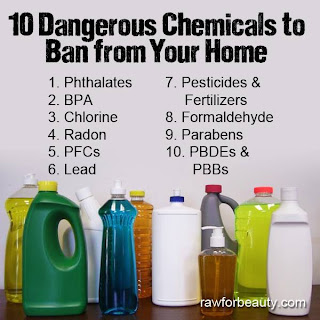Many studies have shown that organically grown food has more minerals and nutrients that we need than food grown with synthetic pesticides. There’s a good reason why many chefs use organic foods in their recipes—they taste better. Organic farming starts with the nourishment of the soil, which eventually leads to the nourishment of the plant and, ultimately our bodies.
2. Save Money
Growing your own food can help cut the cost of the grocery bill. Instead of spending hundreds of dollars and month at the grocery store on foods that don’t really nourish you, spend time in the garden, outside, exercising, learning to grow your own food.
3. Protect Future Generations
The average child receives four times more exposure than an adult to at least eight widely used cancer-causing pesticides in food. Food choices you make now will impact your child’s future health.
“We have not inherited the Earth from our fathers,
we are borrowing it from our children.”
– Lester Brown
4. Prevent Soil Erosion
Soil in developed nations is eroded several times faster than it’s built up naturally. Soil is the foundation of the food chain in organic farming. However, in conventional farming, the soil is used more as a medium for holding plants in a vertical position so they can be chemically fertilized. As a result, many farms worldwide are suffering from the worst soil erosion in history.
5. Protect Water Quality
Water makes up two-thirds of our body mass and covers three-fourths of the planet. Pesticides - some cancer causing - contaminate the groundwater an can pollute the primary source of drinking water.
6. Save Energy
Modern farming uses more petroleum than any other single industry, consuming a significant percentage total energy supply. More energy is now used to produce synthetic fertilizers than to till, cultivate and harvest crops. If you are growing your own food in the city, you are cutting down on transportation and pollution costs.
7. Keep Chemicals Off Your Plate
In the United States, many pesticides approved for use by the Enviromental Protection Agency (EPA) were registered long before extensive research linking these chemicals to cancer and other diseases had been established. Now the EPA considers 60 percent of all herbicides, 90 percent of all fungicides and 30 percent of all insecticides carcinogenic. A 1987 National Academy of Sciences report estimated that pesticides might cause an extra 4 million cancer cases among Americans. If you are growing your own food, you have control over what does, or doesn’t, go into it. The bottom line is that pesticides are poisons designed to kill living organisms and can also harm humans. In addition to cancer, pesticides are implicated in birth defects, nerve damage and genetic mutations.
8. Protect Workers and Help Small Farmers
A National Cancer Institute study found that farmers exposed to herbicides had six times more risk than non-farmers of contracting cancer. In California, reported pesticide poisonings among farm workers have risen an average of 14 percent a year since 1973 and doubled between 1975 and 1985. Field workers suffer the highest rates of occupational illness in the state. Farm worker health is also a serious problem in developing nations, where pesticide use can be poorly regulated. An estimated 1 million people are poisoned annually by pesticides.
Although more and more large-scale farms are making the conversion to organic practices, most organic farms are small, independently owned family farms of fewer than 100 acres. It’s estimated the United States has lost more than 650,000 family farms in the past decade. And the U.S. Department of Agriculture predicted that half of this country’s farm production will come from 1 percent of farms by the year 2000, organic farming could be one of the few survival tactics left for family farms.
9. Promote Biodiversity
Mono-cropping is the practice of planting large plots of land with the same crop year after year. While this approach tripled farm production between 1950 and 1970, the lack of natural diversity of plant life has left the soil lacking in natural minerals and nutrients. To replace the nutrients, chemical fertilizers are used, often in increasing amounts. Single crops are also much more susceptible to pests, making farmers more reliant on pesticides. Despite a tenfold increase in the use of pesticides between 1947 and 1974, crop losses due to insects have doubled—partly because some insects have become genetically resistant to certain pesticides.
10. Help Beautify Your Community
Besides being used to grow food, community gardens are also a great way to beautify a community, and to bring pride in ownership.
Source: Prevent Disease




























